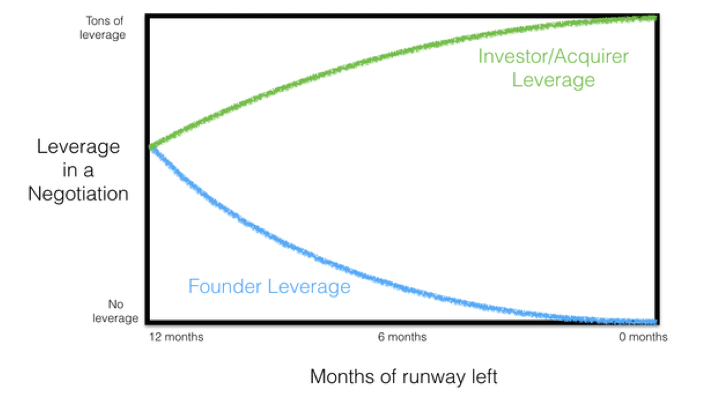How to Prevent Your Startup From Dying
Why Startups Die
There’s a great saying in Silicon Valley that “startups die of suicide, not murder.” The two most common ways startups commit suicide are: 1. Not building a product customers actually want, and 2. Running out of cash. In this blog post, I’ll be discussing the latter.
It is beyond doubt that for every company, cash is its lifeblood. If you run out of cash, the company dies. Many startups shut down because they lack the economic resources to continue funding their operations; this might be because the amount of cash they earn (Revenue) does not ultimately surpass the amount of cash they spend (Expenses) or if the amount they spend to procure a new customer (Customer Acquisition Cost) regularly exceeds the value that a new customer adds to their startup (Customer Lifetime Value).
As an early-stage founder, it’s super easy not to run out of cash and maintain a sustainable cash flow just by knowing your Burn and Runway.
Burn
Burn refers to the rate at which your startup is spending cash each month. You can calculate Burn pretty simply by: the amount of Cash Going Out in a month - the amount of Cash Coming In in a month.
For example, if you had $35,000 in Expenses and $10,000 in Revenue for January, your Burn is $25,000/month. However, Burn rates aren’t always constant, and assuming so can be very dangerous. If your Revenue is ramping up faster than Expenses consistently month after month, your Burn will go down. If your Expenses are ramping up faster than Revenue, or if Revenue growth is nonexistent, your Burn will go up. For these scenarios, you’ll need to make a monthly financial forecast; you’ll have to estimate the Revenue and Expenses for each month, which should help you calculate your fluctuating Burn.
The most obvious ways to burn cash are hiring more people and spending on online marketing/paid growth. My advice to early-stage founders is: don’t hire more people if you don’t have to and don’t spend on online marketing/paid growth if you don’t have Revenue. Every additional hire you make, and each additional dollar you spend, will affect your Burn and hence, your Runway.
Runway
Runway refers to how many months your company can keep operating before it’s out of cash. You can calculate Runway pretty simply as well by: the amount of Cash on Hand / Average Burn.
For example, it’s August, you have $125,000 left, and your average Burn is $25,000/month; thus, your Runway is five months. Or, to put it more brutally, you’ll be out of business at the year’s end. In many cases, lower than two months of Runway is the point of no return. To increase your Runway, you need to reduce Burn by either cutting Expenses, growing Revenue more quickly, or both.
A counter-productive thought is to delude yourself about how it’ll be easy to raise more money from investors if you run out of cash. This leads me to my other piece of advice to early-stage founders: don’t raise money too late because your Runway gives you leverage. The graph above shows that an investor/acquirer is best served to stall until you have no leverage at all. As such, always take action to reduce Burn because delaying it is a bad strategy.
Know Your Burn and Runway
It is critical to calculate and keep a close eye on your Burn and Runway on a weekly basis.
Doing so will explicitly remind you that your startup will run out of cash at some point unless you eventually start generating sufficient Revenue and achieving a Positive Cash Flow state (hopefully, you have been working towards this anyway). It will also tell you when you need to raise money from investors again (I recommend, at a minimum, six months before you run out of cash).
Your Burn and Runway are important numbers to internalize and operate with, and whenever an investor asks, you should know them.
Be Honest with Yourself
Finally, it is crucial to be honest with yourself on your Burn and Runway.
These numbers are not supposed to make you feel good or be used to compare yourself against other companies. Instead, they are for you to know the health of your company. So make sure you always calculate your Burn and Runway in the worst-case scenario.
If you remember nothing else, remember these two things: 1. Know your Burn and Runway, and 2. Be honest with yourself.



